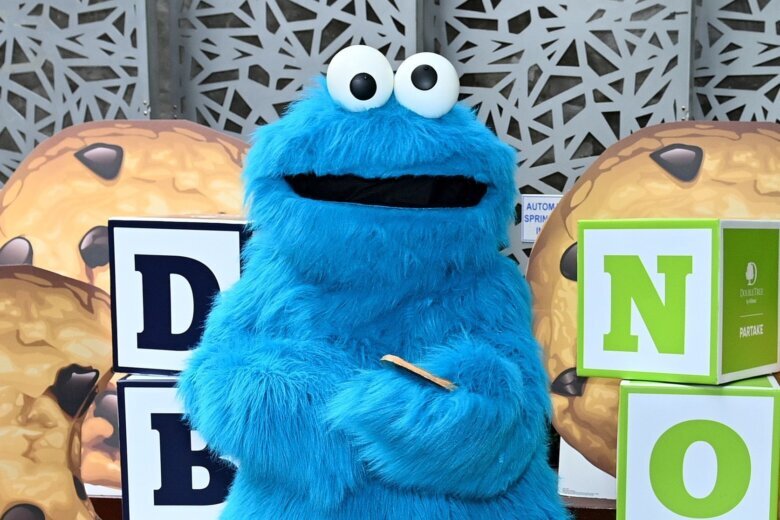
Washington, DC (CNN) — Cookie Monster has taken a stance on a very real and controversial trend in the US economy — and he hates it.
The gluttonous blue Sesame Street character known for gorging on cookies expressed his dismay at “shrinkflation” Monday in a post on X. Cookie Monster is apparently feeling the pain of high prices and an elevated cost of living, which have led to, among other things, the downsizing of certain consumer goods without an accompanying drop in their price.
Guess me going to have to eat double da cookies!
🍪🍪— Cookie Monster (@MeCookieMonster) March 4, 2024
“Me hate shrinkflation! Me cookies are getting smaller,” Cookie Monster wrote. “Guess me going to have to eat double da cookies!”
He may be right.
OREO Double Stuf Chocolate Sandwich Cookies saw a 6% decrease in size by weight from January 2019 to October 2023, according to a report from Democratic Sen. Bob Casey in December, using Labor Department data.
His report also showed that goods ranging from cleaning products, coffee and candies to sugar and frozen foods decreased in size last year, with household paper products experiencing the most shrinkflation.
“Household paper products, like toilet paper and paper towels, are 34.9 percent more expensive per unit than they were in January 2019. Of that total cost increase, 10.3 percent is due to producers shrinking the size of rolls and packages,” the report said.
It’s not a new phenomenon: During times of high inflation, companies increasingly prefer to reduce the size of their products rather than to hike the price, as a way to cut costs. Research indicates that consumers are more sensitive to when prices change than they are to when products become smaller.
But, as inflation has slowed recently, the question as to whether companies are downsizing to boost profits (which some call “greedflation,”) or due to higher input costs, has become debatable.
Cookie Monster sparked an online discussion in the same way Elmo did when he posted a kind-hearted check-in in January, only to get a flood of comments reflecting people’s traumas.
Folks told Elmo they’re not doing OK mentally, now people are telling Cookie Monster they don’t like shrinkflation.
Shrinkflation gets the spotlight
Democratic Sen. Sherrod Brown of Ohio chimed in on Cookie Monster’s post, saying “big corporations shrink the size of their products without shrinking their prices, all to pay for CEO bonuses.”
“People in my state of Ohio are fed up — they should get all the cookie they pay for,” he added.
Daniel Zhao, lead economist at jobs site Glassdoor, posted a chart on X in response to Cookie Monster showing that cookie inflation spiked to more than 19% in November 2022 from a year earlier, but registered at a tepid 0.5% annual increase in January.
That still means that cookie prices are up more than 28% compared to pre-pandemic times, which is “tough for somebody whose consumption basket is 100% cookies,” Zhao wrote.
Democratic Sen. Bob Casey of Pennsylvania responded to the insatiable blue monster by saying: “I’m on it.” Sen. Elizabeth Warren posted that she and Casey “have a bill for that.”
No prominent Republicans seemed to respond to Cookie Monster’s tweet by Monday afternoon.
President Joe Biden is set to deliver his annual State of the Union address to Congress on Thursday, and shrinkflation could be one of the challenges he addresses, according to media reports.
Last month, Biden lambasted shrinkflation ahead of the Super Bowl match, calling on companies to “put a stop to this.”
“The American public is tired of being played for suckers,” Biden said in a video posted on X ahead of the game, which is typically an occasion in which Americans stock up on snacks such as chips and soda.
Casey introduced a bill last week that “empowers Federal Trade Commission and state attorneys general to crack down on corporations reducing product size without a reduction in price.”
Inflation could prove to be a stubborn pain
Meanwhile, while the rate of price increases has slowed dramatically since reaching a four-decade high in the summer of 2022, the level of prices remains above anything Americans dealt with in pre-pandemic times.
Recent economic data have some on Wall Street fearing that inflation could prove to be more stubborn than previously thought.
The latest Consumer Price Index showed that inflation didn’t ease in January as much as investors were expecting. That resulted in a brief selloff that week.
Then the Fed’s preferred inflation gauge — the Personal Consumption Expenditures price index — similarly showed that some price pressures didn’t slow as much as in prior months. In fact, prices rose from December to January at the fastest clip in months.
That all means Fed officials, who are tasked with stabilizing prices, likely won’t cut interest rates anytime soon — so higher prices could be here to stay just a little bit longer. The central bank raised its benchmark lending rate 11 times since March 2022 in an effort to tamp down rising prices by reducing overall demand, but the economy has largely resisted those efforts.
Americans’ attitudes toward the economy have improved recently, thanks to slowing inflation, according to consumer surveys, but remain below levels seen before the Covid-19 pandemic.
Fed Chair Jerome Powell has said Americans “hate” inflation, which has been reflected clearly in surveys and polls.
Powell testifies before congressional lawmakers this week to deliver a semiannual report on the central bank’s policies over the past several months, and the Fed chief could give markets — and cookie consumers — some idea of what to expect in the months ahead.
The-CNN-Wire
™ & © 2024 Cable News Network, Inc., a Warner Bros. Discovery Company. All rights reserved.








